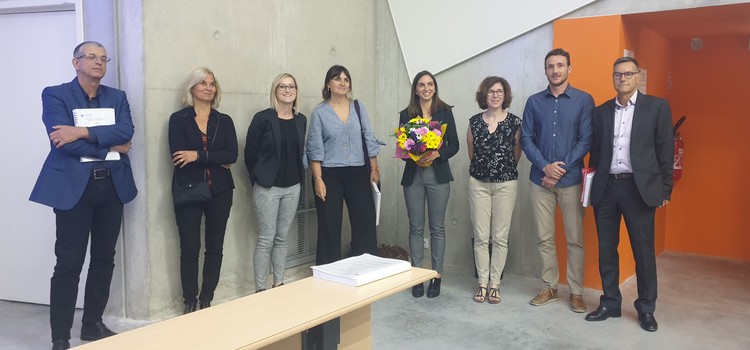PhD thesis defense of Laure GEVAUX
Laure GEVAUX, PhD student at MAPIEM lab, under the supervision of:
will defend her PhD thesis in Polymers Physico-Chemistry, on the topic:
on October 8th,2019, at 9:00AM, in the Amphitheatre M-001, Building M, University of Toulon,
before a jury composed of:
- Mme Valérie LANGLOIS, Professeur, Université Paris-Est, Rapporteur
- Mme Isabelle LINOSSIER-FELLER, Professeur, Université de Bretagne Sud, Rapporteur
- M. Etienne FLEURY,Professeur, INSA de Lyon, Examinateur
- Mme Christine BRESSY, MCF-HDR, Université de Toulon, Co-directrice de thèse
- M. André MARGAILLAN, Professeur, Université de Toulon, Directeur de thèse
- Mme Marlène NOBLET, IGR, Université de Toulon, Co-encadrante
- Mme Marie-Christine SAINTE CATHERINE, Expert DGA, Invitée.
Abstract:
In a context where biocidal antifouling coatings are more and more regulated, it is essential to develop more ecological systems such as the Fouling Release Coatings (FRCs) mainly based on silicone elastomers. FRCs can release the marine biofouling thanks to the physico-chemical properties such as low surface free energy and low elastic modulus that minimize interactions between the foulant and the surface and reduce the adhesion strength. Another category of antifouling coatings, named Self-Polishing Coatings, combines a controlled surface erosion as well as a release of biocides and thus prevents efficiently the marine fouling from settling on ship hulls.
The objective of this PhD work was to design novel « hybrid » FRCs that combine different components and mechanisms of action. Two strategies were thus developed :
1) Silicone elastomers containing hydrolyzable additives from 5 to 20 wt.%
2) Crosslinked PDMS/polyester networks with 12 to 27 wt.% of hydrolysable polyester
The aim of these novel coatings was to obtain surfaces chemically and physically ambiguous towards marine organisms: either by the migration of hydrolyzable additives towards the surface (1), for example, thanks to the addition of poly(bis(trimethylsilyloxy)methylsilyl methacrylate) or by the erosion of PDMS/polyester hybrid networks (2), for instance, thanks to the covalent crosslinking of poly(ԑ-caprolactone) or poly(D,L-lactide-co-glycolide) segments with PDMS chains.
Physico-chemical properties such as the wettability, the surface free energy, the elastic modulus and the hydrolysis/erosion properties of the coatings have been studied before and during immersion in aqueous medium. The antifouling efficiency of the coatings has been evaluated during field immersion in the Mediterranean Sea and bioassays targeting specific marine species.
Keywords: FRC, SPC, hybrid, ambiguous surfaces.


